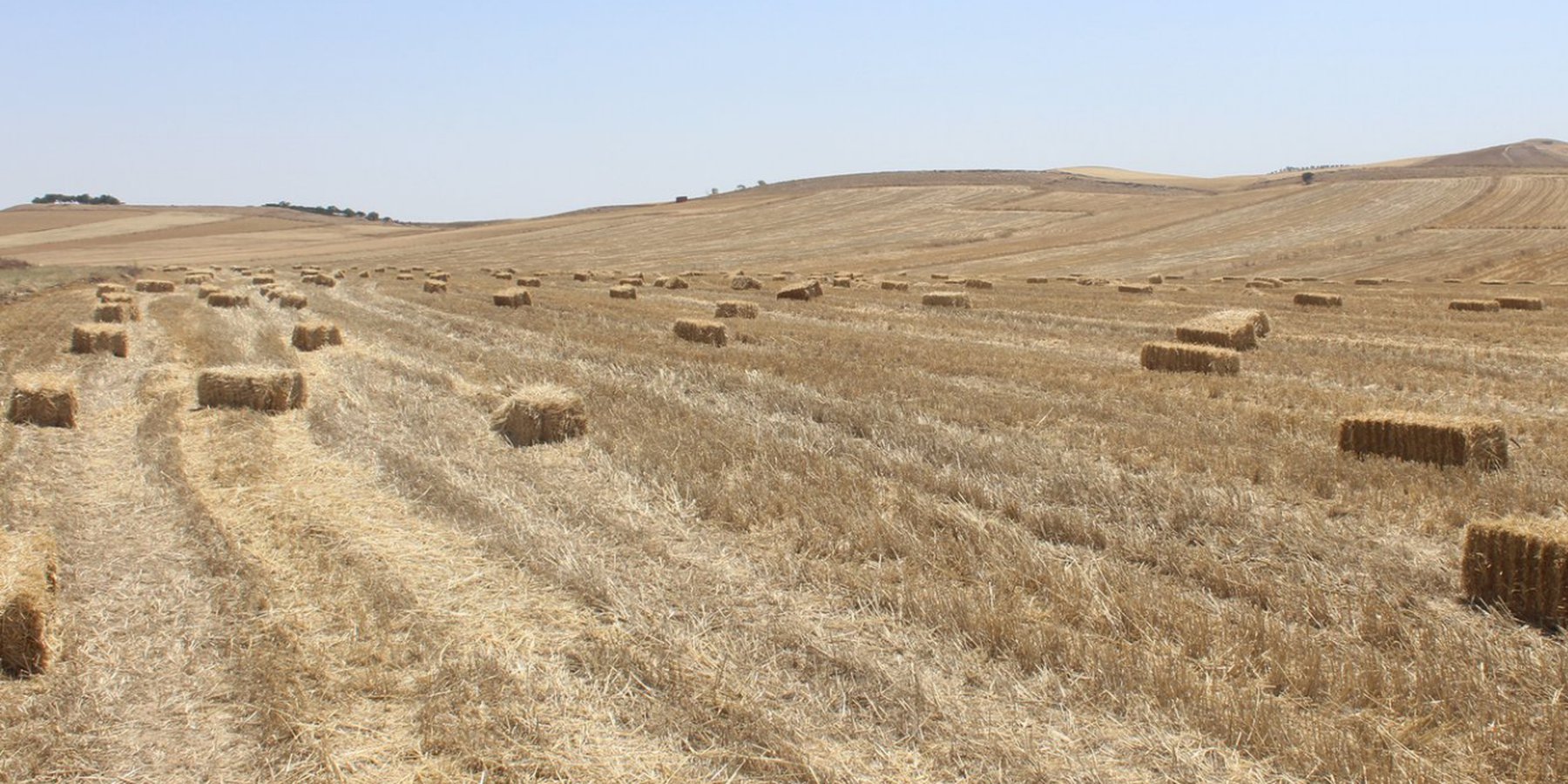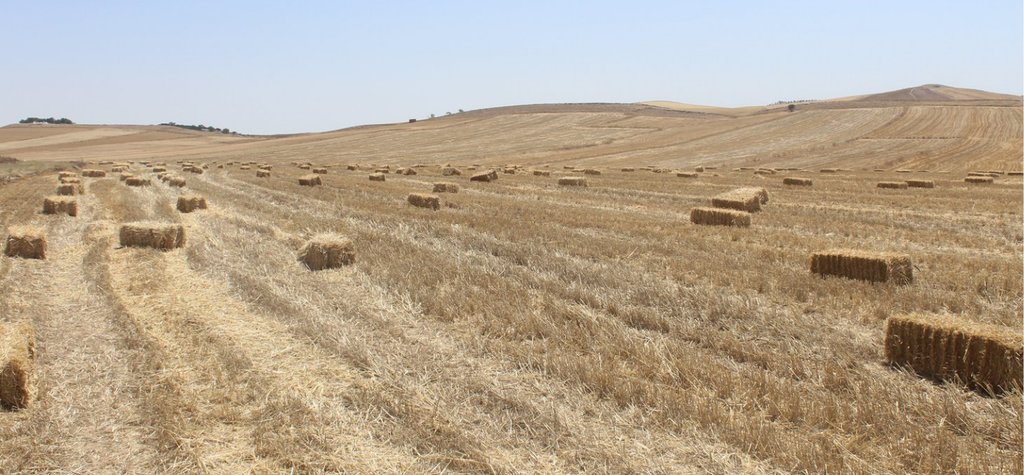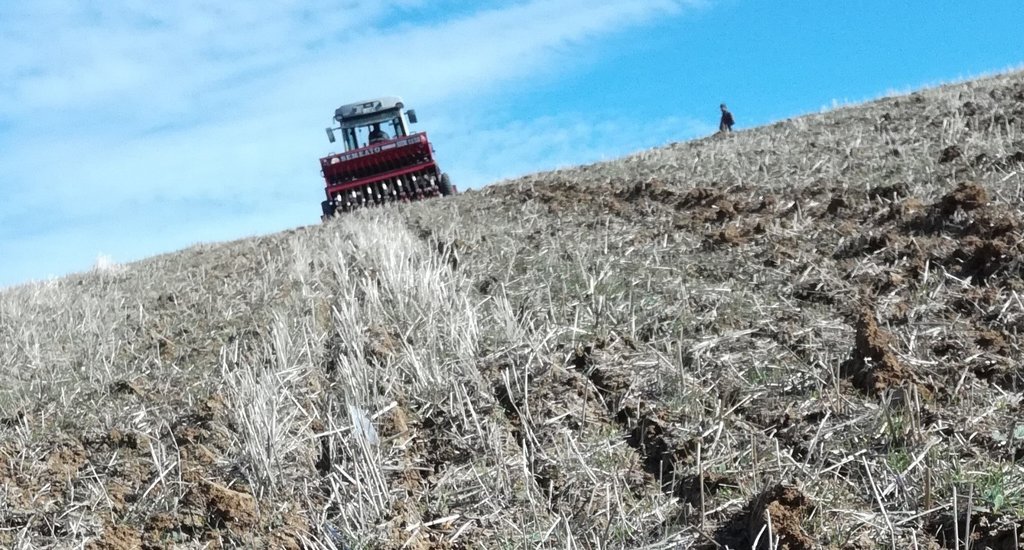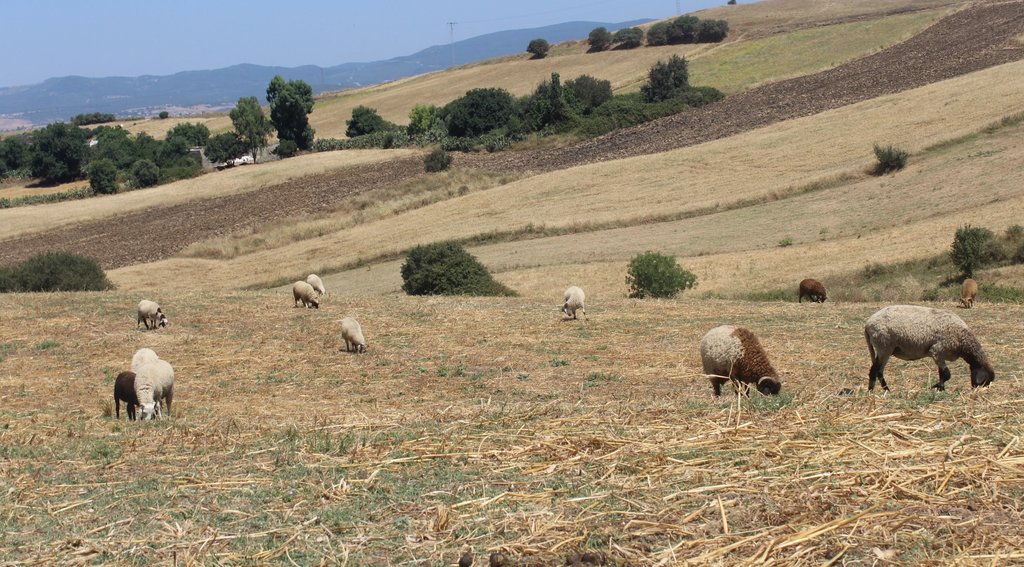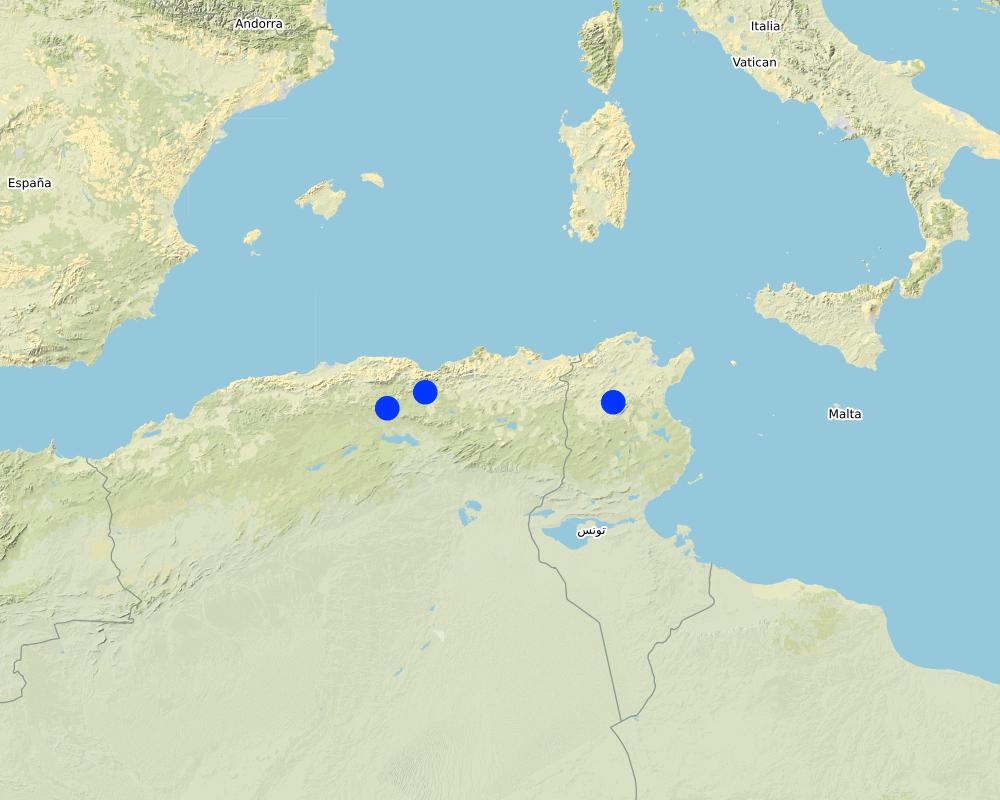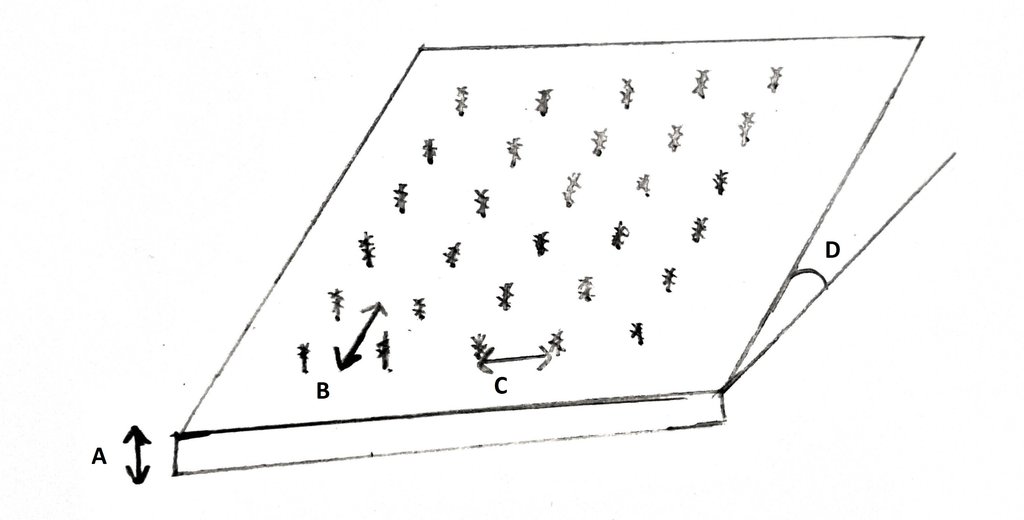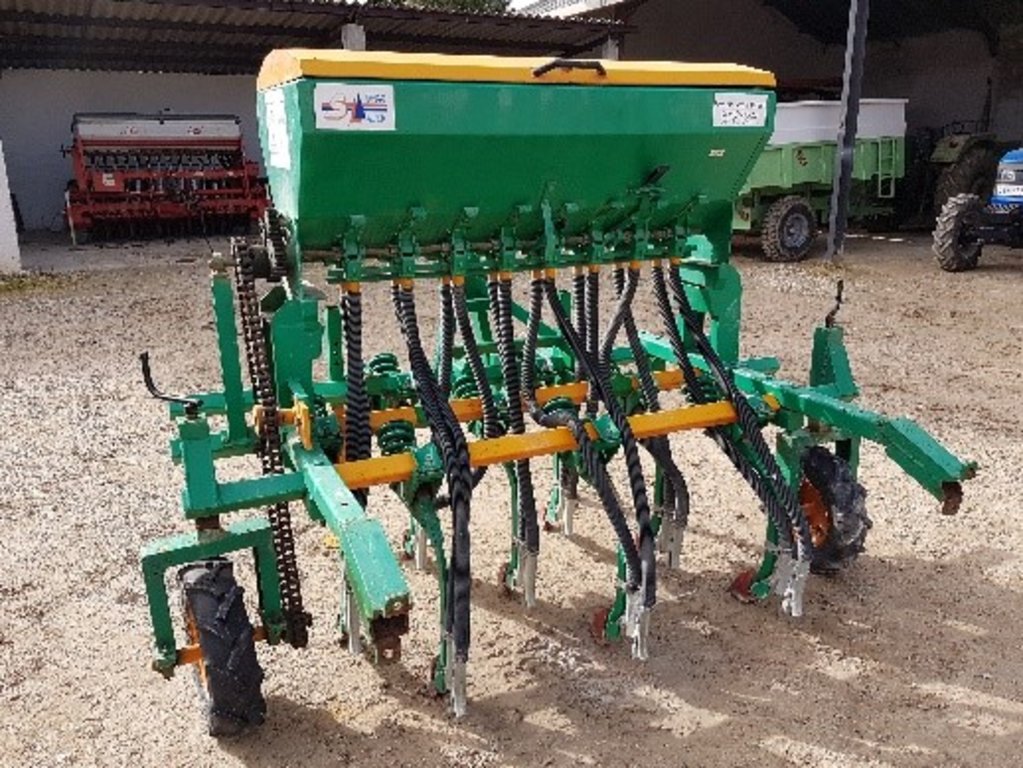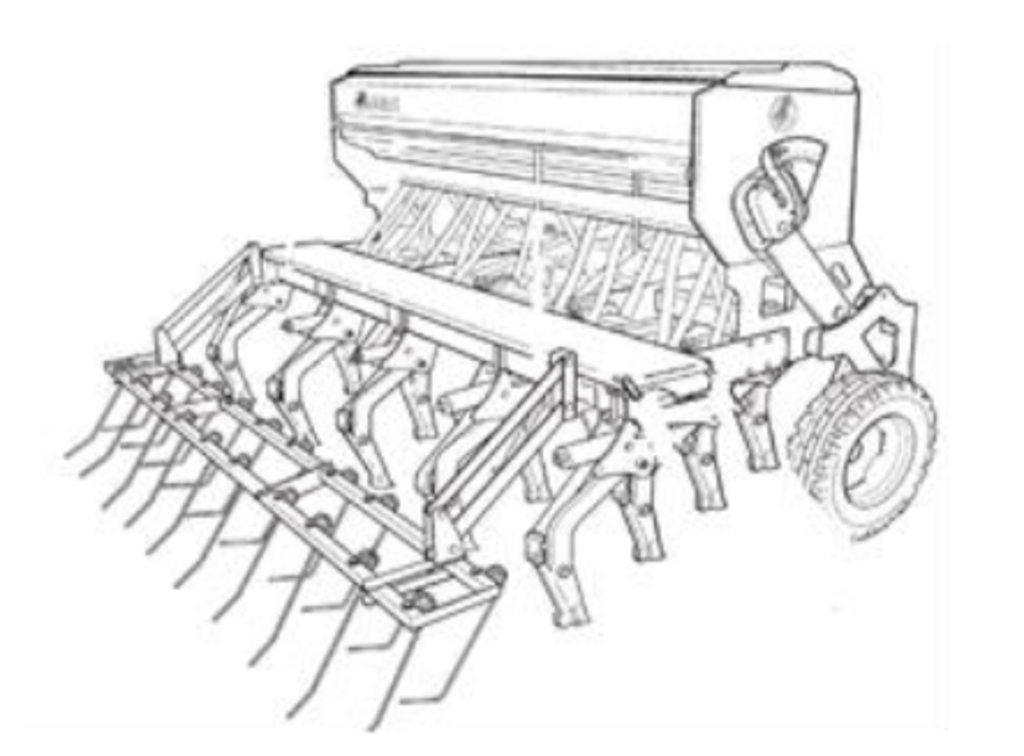Conservation Agriculture in Dryland Mixed Systems
- Creación:
- Actualización:
- Compilador: Joren Verbist
- Editor: –
- Revisor: Rima Mekdaschi Studer
technologies_5819
Visualizar secciones
Expandir todo Colapsar todos1. Información general
1.2 Detalles de contacto de las personas de referencia e instituciones involucradas en la evaluación y la documentación de la Tecnología
Persona(s) de referencia clave
Senior Livestock Scientist:
Rekik Mourad
International Center of Agriculture Research in the Dry Areas (ICARDA)
Tunisia
Agronomist:
M'hamed Cheikh Hatem
National Institute of Agricultural Research of Tunisia (INRAT)
Tunisia
Scaling Specialist:
Idoudi Zied
International Center of Agriculture Research in the Dry Areas (ICARDA)
Tunisia
Nombre del proyecto que financió la documentación/ evaluación de la Tecnología (si fuera relevante)
ICARDA Institutional Knowledge Management InitiativeNombre de la(s) institución(es) que facilitaron la documentación/ evaluación de la Tecnología (si fuera relevante)
International Center for Agricultural Research in the Dry Areas (ICARDA) - Líbano1.3 Condiciones referidas al uso de datos documentados mediante WOCAT
El compilador y la/s persona(s) de referencia claves aceptan las condiciones acerca del uso de los datos documentados mediante WOCAT:
Sí
1.4 Declaración de la sostenibilidad de la Tecnología descrita
¿La Tecnología aquí descrita resulta problemática en relación a la degradación de la tierra, de tal forma que no puede considerársela una tecnología sostenible para el manejo de la tierra?
No
2. Descripción de la Tecnología MST
2.1 Breve descripción de la Tecnología
Definición de la Tecnología:
Conservation Agriculture (CA) is a "ready-to-scale concept" in agriculture that allows a sustainable agricultural production and mitigation of climate change. The documented CA focuses on a dryland mixed system, including a biennial rotation of legume and cereals with integrated livestock management. CA has positive benefits on soil health and significantly reduces the needed inputs (e.g. fuel, labour) and workload for farmers.
2.2 Descripción detallada de la Tecnología
Descripción:
Land degradation leading to desertification is an increasingly important problem in the dry land regions of the globe. This does not only affect the bio-physical aspects such as carbon storage, but also the lives of local land users. Land degradation is often initiated by the lack of vegetation cover as is often a consequence of overgrazing and over-ploughing (i.e mismanagement). Furthermore, climate change leads to droughts, intensified rainfall events, increased temperature, and more extreme weather events. These compromised climatic conditions enhance land degradation. This leads to less fertile soils, reducing yields and consequently deteriorates the income and lives of local farmers. Taking the consequence and scale of degradation into account, natural resource conservation interventions are urgently required.
As the lack of soil cover is an, if not the, essential initiating factor in the desertification process, it should be maximally addressed. In the light of this, CA has been developed, based on three leading principles: i) minimizing soil disturbances or no-tillage, ii) maintaining a permanent soil cover with mulch, and iii) adequate crop rotations. Overall, the three principles prevent land degradation and can also rehabilitate the land. This is because soil organic matter is maintained in/on the soil and the erosive power of raindrops are broken by the soil cover. Therefore, CA aims for more sustainable resource use (land and water use) and to optimize climate-resilient and integrated crop-livestock systems to sustainably intensify production in fragile dry areas.
Tunisia is a country that experiences the previously described pattern and results of desertification and where smallholder farmers are largely dependent on livestock for income generation. However, the livestock competes with the concept of CA as plant residues (stubble) are normally grazed by the livestock. Conservation agriculture propagates no or minimum soil disturbance/ tillage. However, the purchase of a zero-tillage seeder machine appears to be a bottleneck due to high costs since they are hardly produced locally. Nevertheless, there are farmers in the semi -arid areas of Tunisia, who adopted the technology and experience significant benefits such as increased soil fertility and over time increasing yields. In addition, as erosion rates are high in this rainfed area of 300 to 600 mm annual precipitation, a well-covered soil will reduce runoff and loss of top soil. Since ploughing is restricted, the workload and the demanded fuel is reduced, resulting in decreased costs and labour with respect to the conventional practices. Furthermore, integrated crop-livestock is practiced by limiting livestock to graze only the freshly harvested fields while producing manure to enhance soil health (organic fertilization and increase in soil organic matter).
Additionally, according to the third principle of CA, legumes were introduced in the agricultural system (crop rotation), besides the conventional cereal (e.g. durum wheat or barley). Specifically, faba bean is promising, as it has nitrogen fixing effects, enhancing soil health, and increasing and diversifying farm income. Vetch and other forage mixtures have also been successfully introduced to provide farmers with nutritious feed for livestock within the CA concept. In irrigated areas (e.g. parts in Algeria), the practice of CA has an additional benefit as it increases the irrigation water use efficiency due to less evaporation and better infiltration.
The previous agro-pastoral farming practices changed under CA to an integrated crop-livestock system where soil cover is permanent. This mixed system consist of firstly weed control. Secondly, zero-tillage seeding is done directly into the soil even if covered with e.g. mulch/stubble. Faba bean and/or wheat are seeded and rotated yearly. This is beneficial as legumes fix nitrogen in the soil, lowering the amount of nitrogenous fertilizer needed. Thirdly, required fertilizers (for wheat additional nitrogenous fertilizer) is applied with a spreader. Fourthly, herbicides, pesticides, insecticides and fungicides are applied with a sprayer for disease control. Fifthly, the field is harvested with a combine. The stubble is then partly grazed by the sheep and goats until there remains a 1-2 cm residue layer i.e. mulch. For one hectare this accounts for a thirty day grazing period for thirty goats or sheep. This results in an integrated Crop-Livestock system under CA (CLCA), as the stubble provides feed for livestock while the livestock provides the soil with manure.
The land users that have adopted CA have indicated that they extremely appreciate the reduction in work, also the cost of labour and fuel, etc. In addition, they saw increased yields due to improved soil health. However, this beneficial impact could only be observed in the long-term since yields take time to increase, which can be considered as a weakness as the small holder farmer tends to prioritize short term profits. Another weakness is that the livestock is constrained since residues ought to remain on the field.
In conclusion, even though there are bottlenecks, the technology of conservation agriculture is a solution to combat desertification while improving the lives of local land users through the process.
Information and data presented is partly made available through the project “Use of conservation agriculture in crop-livestock systems (CLCA) in the drylands for enhanced water use efficiency, soil fertility and productivity in NEN and LAC countries” funded by the International Fund for Agricultural Development (IFAD), managed by the International Center for Agricultural Research in the Dry Areas (ICARDA) and implemented in Tunisia by the National Agricultural Research Institute (INRAT).
2.3 Fotografías de la Tecnología
2.5 País/ región/ lugares donde la Tecnología fue aplicada y que se hallan comprendidos por esta evaluación
Región/ Estado/ Provincia:
Algeria: M'Sila and Setif; Tunisia: Siliana
Especifique la difusión de la Tecnología:
- distribuida parejamente sobre un área
Si se desconoce el área precisa, indique el área aproximada cubierta:
- 100-1,000 km2
¿El/los sitio(s) de la Tecnología se ubica(n) en un área de protección permanente?
No
Comentarios:
The land under CA in Tunisia and Algeria is 14 000ha and 5600 ha, respectively. Most of the sites (approximately 70%) are thus located in Tunisia. The regions pinned in the map represent the sites that match the documentation.
Map
×2.6 Fecha de la implementación
Indique año de implementación:
1999
2.7 Introducción de la Tecnología
Especifique cómo se introdujo la Tecnología:
- durante experimentos/ investigación
- mediante proyectos/ intervenciones externas
3. Clasificación de la Tecnología MST
3.1 Propósito(s) principal(es) de la Tecnología MST
- mejorar la producción
- reducir, prevenir, restaurar la degradación de la tierra
- adaptarse al cambio climático/ extremos climáticos y sus impactos
- crear impacto económico benéfico
3.2 Tipo(s) actuales de uso de la tierra donde se aplica la Tecnología
Mezcla de tipos de uso de tierras dentro de la misma unidad de tierras: :
Sí
Especifique el uso combinado de tierras (cultivos/ pastoreo/ árboles):
- Agropastoralismo (incluyendo cultivo-ganado integrados)

Tierras cultivadas
- Cosecha anual
Cosechas anuales - Especifique cultivos:
- cereales - trigo (invierno)
- leguminosas y legumbres - frijoles
- Faba bean, vetch
Sistema anual de cultivo:
Trigo o rotación similar con heno/pastizal
Número de temporadas de cultivo por año:
- 1
¿Se practica el intercultivo?
No
¿Se practica la rotación de cultivos?
Sí
Si fuera el caso, especifique :
Wheat is rotated with other crops (see technicality) such as faba bean or forage crops like vetch.

Tierra de pastoreo
Pastoreo intensivo/ producción de forraje:
- Cortar y llevar/ cero pastoreo
- livestock allowed to graze only the freshly harvested fields
Tipo de animal:
- cabras
- ovejas
¿Se practica el manejo integrado de cultivos - ganado?
Sí
Si fuera el caso, especifique :
Crop residues remain on the field. This is allowed for limited grazing by the livestock after harvest (between april and july). The 30-30 rule states that is allowed for a 30 sized flock (sheep or goats) to graze 1 ha for 30 days. Logically, bigger flock means less days and vice versa. While the flock grazes the land it provides the soil with manure. Vetch is cut and carried to feed the livestock.
Productos y servicios:
- carne
- leche
Especies:
cabras
Especies:
ovejas
3.3 ¿Cambió el uso de tierras debido a la implementación de la Tecnología?
¿Cambió el uso de tierras debido a la implementación de la Tecnología?
- Sí (Por favor responda las preguntas de abajo referidas al uso de la tierra antes de implementar la Tecnología)
Mezcla de tipos de uso de tierras dentro de la misma unidad de tierras: :
Sí
Especifique el uso combinado de tierras (cultivos/ pastoreo/ árboles):
- Agropastoralismo (incluyendo cultivo-ganado integrados)

Tierras cultivadas
- Cosecha anual
Cosechas anuales - Especifique cultivos:
- cereales - trigo (invierno)
Sistema anual de cultivo:
Trigo/cebada/avena/arroz de tierra alta de producción continua
¿Se practica el intercultivo?
No
¿Se practica la rotación de cultivos?
No

Tierra de pastoreo
- livestock allowed to graze only the freshly harvested fields
Tipo de animal:
- cabras
- ovejas
¿Se practica el manejo integrado de cultivos - ganado?
Sí
Si fuera el caso, especifique :
livestock allowed to graze on the cereal stubbles left in the field.
Productos y servicios:
- carne
- leche
Comentarios:
The land use has not necessarily changed as in the previous agro-pastoral system, livestock was also allowed to graze the field, providing it with manure. The difference is that under CA the livestock is not allowed to fully graze the land, leaving a soil cover.
3.4 Provisión de agua
Provisión de agua para la tierra donde se aplica la Tecnología:
- de secano
3.5 Grupo MST al que pertenece la Tecnología
- manejo de agricultura—ganadería integrada
- cobertura de suelo/ vegetal mejorada
- perturbación mínima del suelo
3.6 Medidas MST que componen la Tecnología

medidas agronómicas
- A1: vegetación/ cubierta del suelo
- A3: Tratamiento de superficie del suelo
- A6: Manejo de residuos
A3: Diferencie sistemas de labranza:
A 3.1: Sin labranza
A6: Especifique manejo de residuos:
A 6.4: retenido

medidas de manejo
- M2: Cambio de gestión/ nivel de intensidad
Comentarios:
The residues are partly retained and partly grazed.
3.7 Principales tipos de degradación de la tierra encarados con la Tecnología

erosión de suelos por agua
- Wt: pérdida de capa arable/ erosión de la superficie
- Wg: erosión en cárcavas

erosión de suelos por viento
- Et: pérdida de capa arable

deterioro químico del suelo
- Cn: reducción de la fertilidad y contenido reducido de la materia orgánica del suelo (no ocasionados por la erosión)

deterioro físico del suelo
- Pk: desmoronamiento y encostramiento

degradación biológica
- Bc: reducción de la cobertura vegetal del suelo
- Bq: reducción de la cantidad/ biomasa
- Bl: pérdida de la vida del suelo
- Bp: incremento de pestes/ enfermedades, pérdida de depredadores

degradación del agua
- Ha: aridificación
3.8 Prevención, reducción o restauración de la degradación de la tierra
Especifique la meta de la Tecnología con relación a la degradación de la tierra:
- prevenir la degradación de la tierra
- restaurar/ rehabilitar tierra severamente degradada
Comentarios:
The technology of CA prevents land degradation as the soil cover prevents erosion because the cover breaks the erosive power of rainfall and wind. Also, CA has the ability to rehabilitate as the content (like organic matter and carbon) of the soil cover (e.g. mulch/stubble) remains in the soil eventually improving the soil quality.
4. Especificaciones técnicas, actividades de implementación, insumos y costos
4.1 Dibujo técnico de la Tecnología
Especificaciones técnicas (relacionadas al dibujo técnico):
The row interspace (C) for wheat and faba bean is respectively 17 centimeter and 35 centimeter. The density [plants per square meter] for wheat and faba bean is, respectively, 300-400 and 25. The spacing between crops in the row (B) for wheat and faba bean is, respectively, 1.5-2 centimeter and 11 centimeter. The slopes of the fields (D) vary between 3% and 10%.
For the livestock integration with CA, a flock of thirty (goats or sheep) may graze 1 hectare of stubble for a period of thirty days. This yields optimal trade-off between livestock and soil cover. As soil cover a 1-2 cm residue layer remains (A).
Please note that these values may vary with respect to different terrain, species of plants, flock size, and fertilizer application. For example if a flock contain more sheep or goats, it logically results in less grazing days.
Autor:
Joren Verbist
Fecha:
22/12/2020
Especificaciones técnicas (relacionadas al dibujo técnico):
The local Tunisian zero-tillage seeder is named Sajir. This machine has better results than imported machines in terms of adjustable and homogeneous sowing depth, high germination rate and similar yield. The design is still changing to the recent and ongoing modifications (e.g. designing and manufacturing a local tine) to be better suitable to Tunisian soil context.
Autor:
Mohamed Jadlaoui
Fecha:
01/01/2020
Especificaciones técnicas (relacionadas al dibujo técnico):
"Boudour" is a zero-tillage seeder machine used in Algeria.
Its technicality: The loading capacity is 150 kilogram of seeds and 150 kilograms for fertilizer.
The depth can be adjusted and is between 0 and 8 cm. The overall width is 2.8 meter whereas the seed row spacing is 18 centimetres.
The loading height is 154 centimetres.
It is suitable for a 65-76 horsepower tractor.
Autor:
SOLA
Fecha:
01/04/2020
4.2 Información general sobre el cálculo de insumos y costos
Especifique cómo se calcularon los costos e insumos:
- por área de Tecnología
Indique tamaño y unidad de área:
1 hectare
Especifique la moneda usada para calcular costos:
- USD
Indique el costo promedio del salario de trabajo contratado por día:
5.3
4.3 Actividades de establecimiento
| Actividad | Momento (estación) | |
|---|---|---|
| 1. | Purchase Zero-Tillage Seeder |
4.4 Costos e insumos necesarios para el establecimiento
| Especifique insumo | Unidad | Cantidad | Costos por unidad | Costos totales por insumo | % de los costos cubiertos por los usuarios de las tierras | |
|---|---|---|---|---|---|---|
| Equipo | Zero-Tillage Seeder | piece | 1,0 | 20000,0 | 20000,0 | |
| Costos totales para establecer la Tecnología | 20000,0 | |||||
| Costos totales para establecer la Tecnología en USD | 20000,0 | |||||
Comentarios:
The Zero-Tillage-Seeder can be bought as a community. This would lower the effective cost per farmer. Also, it is possible to hire Zero-Tillage Seeder.
4.5 Actividades de establecimiento/ recurrentes
| Actividad | Momento/ frequencia | |
|---|---|---|
| 1. | Weeding (Total weed control) | Year 1 Early-October |
| 2. | Seeding Faba Bean | Year 1 Mid-October |
| 3. | Apply Baseline Fertilization | Year 1 Mid-October |
| 4. | Apply Herbicide | Year 1 Mid-October |
| 5. | Apply Fungicide and Insecticide | Year 1 March-Early April |
| 6. | Limited Grazing/Harvesting | Year 1 Late-April/May |
| 7. | Weeding (Total weed control) | Year 2 Early-November |
| 8. | Seeding Wheat | Year 2 Mid-November |
| 9. | Apply Baseline Fertilization | Year 2 Mid-November |
| 10. | Apply Nitrogenous Fertilization | Year 2 December-January-February |
| 11. | Apply Herbicide | Year 2 December |
| 12. | Apply Fungicide | Year 2 March-April |
| 13. | Limited Grazing/Harvesting | Year 2 Late-June/Early-July |
4.6 Costos e insumos necesarios para actividades de mantenimiento/ recurrentes (por año)
| Especifique insumo | Unidad | Cantidad | Costos por unidad | Costos totales por insumo | % de los costos cubiertos por los usuarios de las tierras | |
|---|---|---|---|---|---|---|
| Mano de obra | Weeding | Person-hour | 1,0 | 100,0 | ||
| Mano de obra | Seeding | Person-hour | 2,0 | 100,0 | ||
| Mano de obra | Fertilizer Application | Person-hour | 0,5 | 100,0 | ||
| Mano de obra | Harvesting | Person-hour | 2,0 | 100,0 | ||
| Equipo | The Zero-Tillage Seeder (hiring cost) | Machine-hour | 2,0 | 16,5 | 33,0 | 100,0 |
| Equipo | Sprayer (hiring cost for disease control) | Machine-hour | 4,5 | 11,0 | 49,5 | 100,0 |
| Equipo | Spreader (hiring costs for nitrogenous fertilizer application) | Machine-hour | 1,5 | 11,0 | 16,5 | 100,0 |
| Equipo | Combine (hiring cost for harvesting) | Machine-hour | 2,0 | 47,5 | 95,0 | 100,0 |
| Material para plantas | Seeds Wheat | Kilogram | 160,0 | 0,4 | 64,0 | 100,0 |
| Material para plantas | Seeds Faba Bean | Kilogram | 120,0 | 0,48 | 57,6 | 100,0 |
| Fertilizantes y biocidas | Baseline Fertilization | Quintal | 2,5 | 19,9 | 49,75 | 100,0 |
| Fertilizantes y biocidas | Nitrogenous Fertilization | Quintal | 3,0 | 15,5 | 46,5 | 100,0 |
| Fertilizantes y biocidas | Pesticide (for total weed control) | Liter | 2,0 | 10,0 | 20,0 | 100,0 |
| Fertilizantes y biocidas | Herbicide for grassy weeds | Liter | 1,0 | 41,2 | 41,2 | 100,0 |
| Fertilizantes y biocidas | Herbicide for broadleaf weeds and sedges | Liter | 2,0 | 29,2 | 58,4 | 100,0 |
| Fertilizantes y biocidas | Fungicide | Liter | 1,5 | 40,0 | 60,0 | 100,0 |
| Fertilizantes y biocidas | Herbicide for annual and perennial grasses | Liter | 1,25 | 25,5 | 31,88 | 100,0 |
| Fertilizantes y biocidas | Insecticide | Liter | 0,1 | 66,8 | 6,68 | 100,0 |
| Otros | Casual Labour | Person-day | 12,0 | 5,3 | 63,6 | 100,0 |
| Indique los costos totales para mantenecer la Tecnología | 693,61 | |||||
| Costos totales para mantener la Tecnología en USD | 693,61 | |||||
Comentarios:
Assuming a biennial rotation (Legume-Cereal), inputs and costs for the establishment of one hectare under the technology are displayed in the table. The costs for solely faba bean is 332.8 USD per hectare.
4.7 Factores más determinantes que afectan los costos:
Describa los factores más determinantes que afectan los costos:
The initial purchase of the zero-tillage machine (20 000 USD) is dominantly affecting the costs of the technology. However, it should be taken into account, that this machine serves the long term. Because the area under description is dominated by small-scale farmers, access to zero-tillage machines is ensured through hiring private entrepreneurs or through the purchase of machines by farmers’ associations rather than individual farmers. Also, it is important to note that the additional costs of conservation agriculture mainly consists of the machine, the weeding control and the seeding of the legumes. Other costs are either similar or reduced with respect to conventional agriculture. For example, conventional agriculture requires three hours of ploughing and 1 hour of sowing. While conservation agriculture only needs half an hour for chemical weeding, 1 hour for sowing and does not require ploughing. This relates to reduced inputs such as fuel.
5. Entorno natural y humano
5.1 Clima
Lluvia anual
- < 250 mm
- 251-500 mm
- 501-750 mm
- 751-1,000 mm
- 1,001-1,500 mm
- 1,501-2,000 mm
- 2,001-3,000 mm
- 3,001-4,000 mm
- > 4,000 mm
Zona agroclimática
- semi-árida
- árida
5.2 Topografía
Pendientes en promedio:
- plana (0-2 %)
- ligera (3-5%)
- moderada (6-10%)
- ondulada (11-15%)
- accidentada (16-30%)
- empinada (31-60%)
- muy empinada (>60%)
Formaciones telúricas:
- meseta/ planicies
- cordilleras
- laderas montañosas
- laderas de cerro
- pies de monte
- fondo del valle
Zona altitudinal:
- 0-100 m s.n.m.
- 101-500 m s.n.m.
- 501-1,000 m s.n.m
- 1,001-1,500 m s.n.m
- 1,501-2,000 m s.n.m
- 2,001-2,500 m s.n.m
- 2,501-3,000 m s.n.m
- 3,001-4,000 m s.n.m
- > 4,000 m s.n.m
Indique si la Tecnología se aplica específicamente en:
- no relevante
5.3 Suelos
Profundidad promedio del suelo:
- muy superficial (0-20 cm)
- superficial (21-50 cm)
- moderadamente profunda (51-80 cm)
- profunda (81-120 cm)
- muy profunda (>120 cm)
Textura del suelo (capa arable):
- mediana (limosa)
Textura del suelo (> 20 cm debajo de la superficie):
- áspera/ ligera (arenosa)
- mediana (limosa)
Materia orgánica de capa arable:
- media (1-3%)
- baja (<1%)
Si se halla disponible, adjunte una descripción completa de los suelos o especifique la información disponible, por ej., tipo de suelo, pH/ acidez de suelo, capacidad de intercambio catiónico, nitrógeno, salinidad, etc. :
The top soil organic matter is relatively high as consequence of conservation agriculture.
5.4 Disponibilidad y calidad de agua
Agua subterránea:
< 5 m
Disponibilidad de aguas superficiales:
pobre/ ninguna
Calidad de agua (sin tratar):
agua potable de mala calidad (requiere tratamiento)
La calidad de agua se refiere a:
agua subterránea
¿La salinidad del agua es un problema?
Sí
¿Se está llevando a cabo la inundación del área? :
No
5.5 Biodiversidad
Diversidad de especies:
- baja
Diversidad de hábitats:
- baja
5.6 Las características de los usuarios de la tierra que aplican la Tecnología
Sedentario o nómada:
- Sedentario
Orientación del mercado del sistema de producción:
- mixta (subsistencia/ comercial)
Ingresos no agrarios:
- 10-50% de todo el ingreso
Nivel relativo de riqueza:
- pobre
- promedio
Individuos o grupos:
- individual/ doméstico
- grupos/ comunal
Nivel de mecanización:
- mecanizado/motorizado
Género:
- mujeres
- hombres
Edad de los usuarios de la tierra:
- personas de mediana edad
- ancianos
5.7 Área promedio de la tierra usada por usuarios de tierra que aplican la Tecnología
- < 0.5 ha
- 0.5-1 ha
- 1-2 ha
- 2-5 ha
- 5-15 ha
- 15-50 ha
- 50-100 ha
- 100-500 ha
- 500-1,000 ha
- 1,000-10,000 ha
- > 10,000 ha
¿Esto se considera de pequeña, mediana o gran escala (refiriéndose al contexto local)?
- pequeña escala
Comentarios:
Average size of smallholder farmers that have adopted CA have a farm size of less than ten hectares.
5.8 Tenencia de tierra, uso de tierra y derechos de uso de agua
Tenencia de tierra:
- individual, sin título
- individual, con título
Derechos de uso de tierra:
- individual
Derechos de uso de agua:
- comunitarios (organizado)
- individual
¿Los derechos del uso de la tierra se basan en un sistema legal tradicional?
Sí
Especifique:
Land use rights in Tunisia have a long history with religious (e.g. melk) influences and French influences. This resulted in that currently most lands are private owned or state owned,
5.9 Acceso a servicios e infraestructura
salud:
- pobre
- moderado
- bueno
educación:
- pobre
- moderado
- bueno
asistencia técnica:
- pobre
- moderado
- bueno
empleo (ej. fuera de la granja):
- pobre
- moderado
- bueno
mercados:
- pobre
- moderado
- bueno
energía:
- pobre
- moderado
- bueno
caminos y transporte:
- pobre
- moderado
- bueno
agua potable y saneamiento:
- pobre
- moderado
- bueno
servicios financieros:
- pobre
- moderado
- bueno
6. Impactos y comentarios para concluir
6.1 Impactos in situ demostrados por la Tecnología
Impactos socioeconómicos
Producción
producción de cultivo
Comentarios/ especifique:
Over time the crop production increases as the soil quality increases
calidad de cultivo
Comentarios/ especifique:
Over time the crop quality increases as the soil quality increases
producción de forraje
calidad de forraje
Ingreso y costos
gastos en insumos agrícolas
Comentarios/ especifique:
Less fuel needen for ploughing. This was a signficant cost in the conventional system.
ingreso agrario
Comentarios/ especifique:
The farm income increases as there are less costs and higher yields with respect to the previous agricultural acitivites.
carga de trabajo
Comentarios/ especifique:
Farmers spend less work on the field as the field is not ploughed.
Impactos socioculturales
MST/ conocimiento de la degradación de la tierra
Impactos ecológicos
Ciclo de agua/ escurrimiento de sedimento
cosecha/ recolección de agua
Comentarios/ especifique:
Less water runs off due to soil cover. Thus more water is collected in the soil.
escurrimiento superficial
Comentarios/ especifique:
Due to the soil cover, more water is retained and less water runs-off.
evaporación
Comentarios/ especifique:
The soil cover provides shade for the soil. Therefore less water is evaporated.
Suelo
humedad del suelo
Comentarios/ especifique:
The soil is more moist as the soil cover provides shade. So the soil has a lower temperature.
cubierta del suelo
Comentarios/ especifique:
CA strives for permanent soil cover.
pérdida de suelo
Comentarios/ especifique:
The soil cover breaks the erosive power of rain drops. Also due to decreased run-off, there is less erosion.
acumulación de suelo
Comentarios/ especifique:
The soil cover eventually decomposes into the soil which lead to accumulation.
encostramiento/ sellado de suelo
Comentarios/ especifique:
The splash erosion of the rain drops is broken by the soil cover, resulting in less crusting.
ciclo/ recarga de nutrientes
materia orgánica debajo del suelo C
Comentarios/ especifique:
The soil cover is decomposed in the soil. Which is partly carbon.
Biodiversidad: vegetación, animales
biomasa/ sobre suelo C
diversidad vegetal
Comentarios/ especifique:
CA encourages the use of adequate crop rotation.
especies benéficas
Comentarios/ especifique:
CA encourage the use of beneficial species like legumes that fixate nitrogen.
Reducción de riesgos de desastres y riesgos climáticos
micro-clima
6.2 Impactos fuera del sitio demostrados por la Tecnología
colmatación río abajo
Comentarios/ especifique:
As conservation agriculture reduces erosion, it consequently reduces downstream siltation.
sedimentos transportados por el viento
6.3 Exposición y sensibilidad de la Tecnología al cambio climático gradual y a extremos relacionados al clima/ desastres (desde la percepción de los usuarios de tierras)
Cambio climático gradual
Cambio climático gradual
| Estación | Incremento o reducción | ¿Cómo es que la tecnología soporta esto? | |
|---|---|---|---|
| temperatura anual | incrementó | bien | |
| lluvia anual | disminuyó | bien |
Extremos (desastres) relacionados al clima
Desastres climatológicos
| ¿Cómo es que la tecnología soporta esto? | |
|---|---|
| incendio | no muy bien |
Desastres biológicos
| ¿Cómo es que la tecnología soporta esto? | |
|---|---|
| enfermedades epidémicas | no muy bien |
6.4 Análisis costo-beneficio
¿Cómo se comparan los beneficios con los costos de establecimiento (desde la perspectiva de los usuarios de tierra)?
Ingresos a corto plazo:
negativo
Ingresos a largo plazo:
ligeramente positivo
¿Cómo se comparan los beneficios con los costos de mantenimiento/ recurrentes (desde la perspectiva de los usuarios de tierra)?
Ingresos a corto plazo:
positivo
Ingresos a largo plazo:
muy positivo
Comentarios:
The maintenance of conservation agriculture is positively experienced because of the reduced workload and inputs as the additional costs of e.g. weeding and pest control are not larger than the original costs of weeding and ploughing. However, the establishment costs are considered negative due to the significant costs of the zero-tillage machine. In the long term, the improved soil conditions should have maximum benefits.
6.5 Adopción de la Tecnología
- 1-10%
De todos quienes adoptaron la Tecnología, ¿cuántos lo hicieron espontáneamente, por ej. sin recibir nada de incentivos/ materiales:
- 11-50%
6.6 Adaptación
¿La tecnología fue modificada recientemente para adaptarse a las condiciones cambiantes?
Sí
otros (especifique):
The demand of the farmers
Especifique la adaptación de la Tecnología (diseño, material/ especies, etc.):
The farmers demanded different dimensions for the Zero-Tillage-seeder, related to their desired inter rows spaces e.g. a wider seeder so more area is seeded in the same time.
6.7 Fuerzas/ ventajas/ oportunidades de la Tecnología
| Fuerzas/ ventajas/ oportunidades desde la perspectiva del usuario de la tierra |
|---|
| Conservation Agriculture (CA) reduces the costs and workload with respects to conventional farming. For example, in conventional agriculture the field was ploughed, which costed machine hours. This cost is cancelled out by conservation agriculture, following the three principles. On top of that, this results in less costs such as depreciation of the plough and less consumed fuel. |
| CA leads to improved soil conditions and reduced/prevented land degradation which leads to increased biomass-production. This does benefit the land user. However, these benefits are noticeable in the long term. So, conservation agriculture is therefore significantly beneficial and (economically) important for family farms, where the land is passed on to future generations. |
| In irrigated areas, conservation agriculture leads to improved irrigation water use efficiency because of less water evaporation from the soil surface. Additionally, in flood irrigated areas, the soil is better protected and not flushed away. Farmers that have limited amount of irrigation water consider this a great benefit. In Algeria for example, the impact of CA practices resulted in a 30–40% reduction in the use of irrigation water and a two- to three-fold increase in barley and wheat production without the use of better seeds. |
| Fuerzas/ ventajas/ oportunidades desde la perspectiva del compilador o de otra persona de referencia clave |
|---|
| In Tunisia, it has been proven that CA based on Zero tillage and soil residue retention vs conventional agriculture contributes to make wheat production more resilient to climate change through enhancing wheat yield (15%), improvement of water use efficiency (13% to 18%), increase organic carbon accumulation (0.13 ton/ha/year to 0.18 ton/ha/year-). The reduction of soil loss caused by soil water erosion varies between 1.7 ton/ha/year to 4.6 ton/ha/year of soil loss. |
| CA prevents desertification. This is important as the desertification is increasing in dry lands. Thereby, it reduces the socio-economic capacity of the rural population, because of deteriorated biomass-production. Hence conservation agriculture is important to develop capacity in the rural areas of the dry lands as it ensures increased yields (i.e. higher income) |
| Soil microbial activity is an indicator for soil fertility. Preliminary results showed that soil microbial activity was higher under CA than conventional practices for different studied soil layers (0-15 cm, 15-25 cm and 25-45 cm). |
| Regarding the impact of CA on natural resources, especially soil health and water efficiency. Scientific evidences show that soil loss due to erosion reduced by 14 percent, some 62 kilograms per hectare under CA practices compared to conventional practices. |
6.8 Debilidades/ desventajas/ riesgos de la Tecnología y formas de sobreponerse a ellos
| Debilidades/ desventajas/ riesgos desde la perspectiva del usuario de la tierra | ¿Cómo sobreponerse a ellas? |
|---|---|
| The competition between livestock is identified as a major issue in terms of effectiveness and adoptability of conservation agriculture (CA). Livestock grazes the stubble and crop residues, reducing the amount of soil cover on the field, thus lowering the protection and improvement of the soil. And as most farmers rely on livestock, this conflict between livestock and CA lowers the adoption rate of the technology. | This can be addressed through integrated smart livestock management. The approach should aim at minimizing the harm to soil cover, while maximizing the nutrition intake of livestock. The 30/30-model, in which the optimal trade-off between soil cover and grazing period is found, offers such solution. Here 30 sheep or goats may graze one hectare for thirty days. This leaves enough soil cover and meets livestock demand. |
| The price and availability of the zero-tillage seeder is crucial in the farmer's decision to adopt CA. The purchase of such a machine is namely very high for a farmer. It is unlikely that a farmer is willing to invest this huge amount as the farmer prefers profit in the short term. | Investments (private and government) are needed to boost the manufacturing of national made zero-tillage seeder. This would increase the availability of the machine and decrease the price. Furthermore, farmers may organize themselves into communitiy user groups and cooperations hence, lowering the cost per farmer. However, good governance and planning of machine use is essential, as tension may develop during the short sowing period for the use of the machine. |
| The risks of pests and weeds increase during first years of the transition from conventional tillage to CA because of the residues left on the field and the change in the weeds flora. These form a good basis for disease development. | In the short term this can be overcome by using herbicides and fungicides. However, this might be paired with other risks. Therefore, there should be research into alternative pest controls measures, such as intercropping or the introduction of natural enemies. |
| Debilidades/ desventajas/ riesgos desde la perspectiva del compilador o de otra persona de referencia clave | ¿Cómo sobreponerse a ellas? |
|---|---|
| The low capacity of farmers to invest in CA, specifically a zero-tillage seeder, is a weakness. This is due to the lack of government support and due to the small scale of most farms (80% of the Tunisian farmers have less than 10 ha of land). |
Iimprove institutional support by for example the government. The government can support farmers by giving subsides to allow the purchase of a zero-tillage seeder machine. The wider scale adoption of CA requires a change in commitment and behavior of all stakeholders. Such changes call for sustained policy and institutional support that provides both incentives and motivations to encourage farmers to adopt components of CA practices and improve them over time. |
| The increasing use of pesticides for weeding and pest control is a growing concern and risk. Pesticides may have harming effects on the soil, the biodiversity and the public health. | Alternatives to pesticides can overcome this risk. However, research is needed to scrutinize this and if it is cost-effective. Possible alternative approaches are intercropping and the introduction of natural enemies. This would not only mitigate the risk of pests and weeding, but also enhance soil health and biodiversity. |
7. Referencias y vínculos
7.1 Métodos/ fuentes de información
- entrevistas con especialistas/ expertos en MST
- compilación de informes y otra documentación existente
7.2 Vínculos a las publicaciones disponibles
Título, autor, año, ISBN:
Amir Souissi, Bahri Haithem, Hatem Cheikh M'hamed, Mohamed Chakroun, Salah Ben Youssef, Aymen Frija, Mohamed Annabi. (7/8/2020). Effect of Tillage, Previous Crop, and N Fertilization on Agronomic and Economic Performances of Durum Wheat (Triticum durum Desf. ) under Rainfed Semi-Arid Environment. Agronomy, 10(8).
¿Dónde se halla disponible? ¿Costo?
https://hdl.handle.net/20.500.11766/11886
Título, autor, año, ISBN:
Amar Rouabhi, Abdelmalek Laouar, Abdelhamid Mekhlouf, Boubaker Dhehibi. (1/3/2019). Socioeconomic assessment of no-till in wheat cropping system: a case study in Algeria. New Medit, 18(1).
¿Dónde se halla disponible? ¿Costo?
https://hdl.handle.net/20.500.11766/9761
Título, autor, año, ISBN:
Bahri Haithem, Mohamed Annabi, Hatem Cheikh M'hamed, Aymen Frija. (1/11/2019). Assessing the long-term impact of conservation agriculture on wheat-based systems in Tunisia using APSIM simulations under a climate change context. Science of the Total Environment, 692, pp. 1223-1233.
¿Dónde se halla disponible? ¿Costo?
https://hdl.handle.net/20.500.11766/10157
Título, autor, año, ISBN:
CLCA Project Page
¿Dónde se halla disponible? ¿Costo?
https://mel.cgiar.org/projects/clca2
7.3 Vínculos a la información relevante disponible en línea
Título/ descripción:
Zied Idoudi, Nasreddine Louahdi, Mina Devkota Wasti, Zahra Djender, Aymen Frija, Mourad Rekik. (26/4/2020). Public-Private Partnership for enhanced conservation agriculture practices: the case of Boudour Zero-Till seeder in Algeria. Lebanon: International Center for Agricultural Research in the Dry Areas (ICARDA).
URL:
https://hdl.handle.net/20.500.11766/11047
Título/ descripción:
Mourad Rekik, Santiago López Ridaura, Hatem Cheikh M'hamed, Zahra Djender, Boubaker Dhehibi, Aymen Frija, Mina Devkota Wasti, Udo Rudiger, Enrico Bonaiuti, Dina Najjar, Zied Idoudi. (26/11/2019). Use of Conservation Agriculture in Crop-Livestock Systems (CLCA) in the Drylands for Enhanced Water Use Efficiency, Soil Fertility and Productivity in NEN and LAC Countries – Project Progress Report: Year I - April 2018 to March 2019. Jordan: International Center for Agricultural Research in the Dry Areas (ICARDA).
URL:
https://hdl.handle.net/20.500.11766/10444
Título/ descripción:
Udo Rudiger, Hatem Cheikh M'hamed. (1/5/2019). Inspired by Nature - A Tunisian Farmer’s Perspective on Sustainable Integration of Crop and Livestock. (Short version).
URL:
https://hdl.handle.net/20.500.11766/10013
Título/ descripción:
Peter Fredenburg, Colin Piggin, Michael Devlin. (30/11/2012). Conservation agriculture: opportunities for intensified farming and environmental conservation in dry areas. Aleppo, Syria: International Center for Agricultural Research in the Dry Areas (ICARDA).
URL:
https://hdl.handle.net/20.500.11766/5073
Título/ descripción:
Hichem Ben Salem. (15/12/2015). Strategic Practical Options for Integrating Conservation Agriculture Cropping and Livestock Systems. Amman, Jordan: International Center for Agricultural Research in the Dry Areas (ICARDA).
URL:
https://hdl.handle.net/20.500.11766/4999
Título/ descripción:
Hichem Ben Salem. (4/5/2016). Recent trends in conservation agriculture.
URL:
https://hdl.handle.net/20.500.11766/4771
Título/ descripción:
Aymen Frija. (26/11/2016). Conservation Agriculture: strengthening crop production in marginal areas. URL: https://globalfutures.cgiar.org/2016/11/28/conservation-agriculture-strengthening-crop-production-in-marginal-areas/
URL:
https://hdl.handle.net/20.500.11766/6120
Título/ descripción:
Hajer Guesmi, Hichem Ben Salem, Nizar Moujahed. (1/9/2019). Integration crop-livestock under conservation agriculture system. Journal of New Science, 65(1), pp. 4061-4065.
URL:
https://hdl.handle.net/20.500.11766/11423
Título/ descripción:
Bahri Haithem, Mohamed Annabi, Hatem Cheikh M'hamed, Aymen Frija. (1/11/2019). Assessing the long-term impact of conservation agriculture on wheat-based systems in Tunisia using APSIM simulations under a climate change context. Science of the Total Environment, 692, pp. 1223-1233.
URL:
https://hdl.handle.net/20.500.11766/10157
Título/ descripción:
Ayoub Fouzai, Maroua Smaoui, Aymen Frija, Boubaker Dhehibi. (5/5/2019). Adoption of Conservation Agriculture Technologies by Smallholder Farmers in the semiarid region of Tunisia: Resource constraints and partial adoption. Journal of New Sciences, 6(1), pp. 105-114.
URL:
https://hdl.handle.net/20.500.11766/9988
Vínculos y módulos
Expandir todo Colapsar todosVínculos
No hay vínculos
Módulos
No se hallaron módulos


